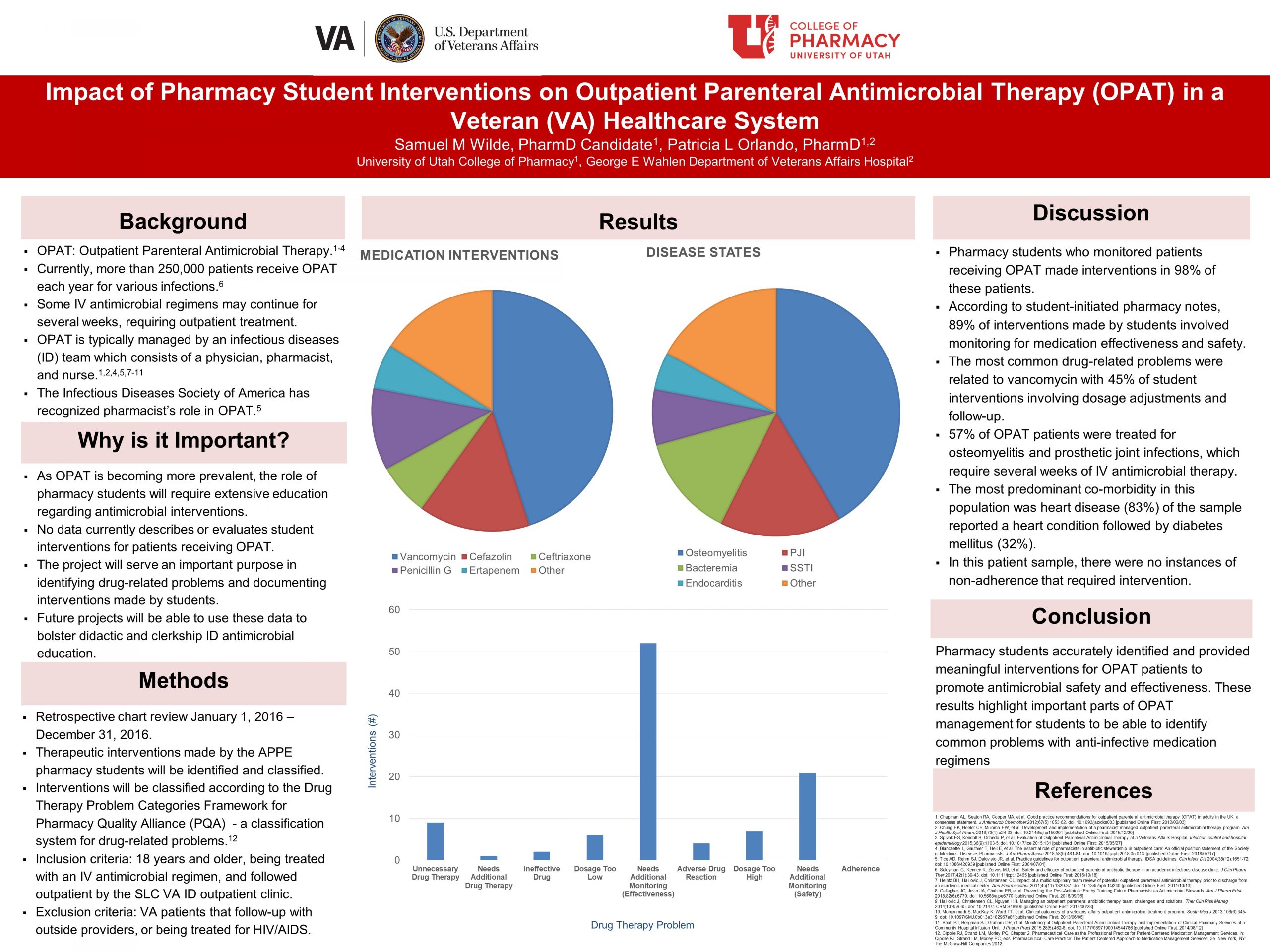Wilde Samuel
Evaluation of Pharmacy Student Interventions on Outpatient Parenteral Antimicrobial Therapy (OPAT) in a Veteran (VA) Healthcare System
April 29, 2020 in College of Pharmacy, Virtual Poster Session Spring 2020

Objective:
The purpose of this study was to identify and categorize drug-related problems documented by 4th-year pharmacy students that required intervention in an OPAT clinic associated with the Salt Lake City VA. This enabled investigators to describe common drug-related problems found by students to serve as a basis for curricula development.
Methods:
Charts were reviewed from January 1, 2016, to December 31, 2016, in order to analyze notes written by pharmacy students regarding medication interventions. Each note was reviewed, classifying problems into several categories of drug therapy problems (DTPs).
A DTP is where medication therapy has or may cause an event which could interfere with positive patient outcomes. Classification of the intervention required to resolve the DTP was also recorded. In addition to the identification of DTPs and the interventions which were made to resolve them, this study also characterized any interventions that were not made, when it should have been, according to the Infectious Diseases Society of America (IDSA) guidelines and VA Health System protocols.
Patients were identified according to whether they did or did not require intervention as noted by pharmacy student documentation in the patient medical chart. Patients who were identified as having an intervention were further classified into specific categories. Classification of each intervention, ultimately, was determined by the chart reviewers, based on the Pharmacy Quality Alliance’s Medication Therapy Problem Categories Framework that was published in 2012.
Results:
According to student-initiated pharmacy notes, a total of 102 medical chart notes were reviewed. These notes required intervention by the patient’s infectious diseases clinic team. The most common drug-related problems were found to be related to vancomycin where 57.4% of patients treated within the OPAT program were being treated for osteomyelitis or prosthetic joint infections. Vancomycin was associated with an increased number of interventions, likely due to the extensive monitoring parameters required to maintain therapeutic efficacy and safety.
Conclusion:
Antimicrobial regimens used in patients on OPAT are associated with drug-related problems involving many antimicrobial agents. It is clear that students are highly involved in monitoring patients on vancomycin for safety and effectiveness. These results highlight important parts of OPAT management for students to be able to identify common problems in order to make appropriate recommendations.
